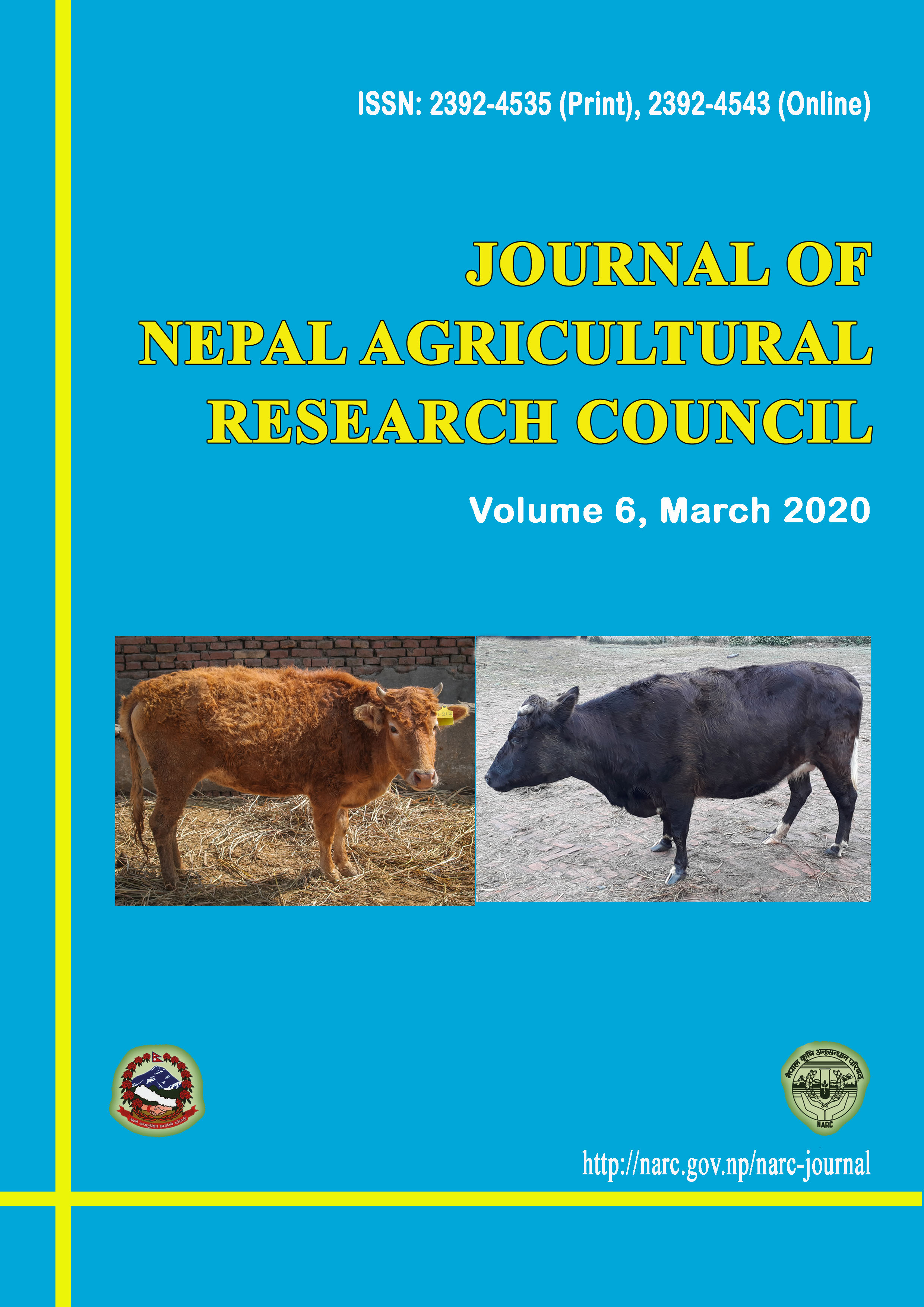Agrobiodiversity and its Conservation in Nepal
DOI:
https://doi.org/10.3126/jnarc.v6i0.28111Keywords:
Agrobiodiversity, aquatic resource, conservation, crop, forage, good practices, insect, livestock, microorganismAbstract
Nepal is a part of the world’s biodiversity hotspot and ranks the 49th in the world for biodiversity. Agrobiodiversity and its conservation status were studied through literature review, field survey, key informant survey and focus group discussion. Results of field implementation of some good practices and action research were also documented. Among 24,300 total species in the country, 28% are agricultural genetic resources (AGRs), termed as agrobiodiversity. Agrobiodiversity has six components (crops, forages, livestock, aquatic, insects and microorganisms) and four sub-components (domesticated, semi-domesticated, wild relatives and wild edible) in Nepal. Agrobiodiversity on each component exists at agroecosystem, species, variety/breed/biotype/race/strain, genotype and allele levels, within an altitude range from 60 to 5,000 masl. There are 12 agroecosystems supporting 1026 species under crop component, 510 under forage, 35 under livestock, 250 under the aquatic animal, 17 under aquatic plant, 3,500 under insect and 800 under microorganism. An estimated loss of agrobiodiversity is 40%, however, farmers have reported up to 100% loss of AGRs in some areas for a particular species. Conservation of agrobiodiversity has been initiated since 1986. Four strategies namely ex-situ, on-farm, in-situ and breeding have been adopted for conservation and sustainable utilization of AGRs. Eighty good practices including process, methods and actions for managing agrobiodiversity have been in practice and these practices come under five conservation components (sensitization, method and approach, accelerator, value and enabling environment). Within the country, 18,765 accessions of AGRs have been conserved in different kinds of banks. A total of 24,683 accessions of Nepalese crops, forages and microbes have been conserved in different international and foreign genebanks. Some collections are conserved as safety duplication and safety backup in different CGIARs’ banks and World Seed Vault, Korea. Two global databases (GENESYS and EURISCO) have maintained 19,200 Nepalese accessions. Geographical Information System, Climate Analog Tool and biotechnological tools have been applied for better managing AGRs. Many stakeholders need to further concentrate on the conservation and utilization of AGRs. Global marketing of some native AGRs is necessary for sustaining agriculture and attracting young generations as well as conserving them through use.
Downloads
Downloads
Published
How to Cite
Issue
Section
License
This license enables reusers to distribute, remix, adapt, and build upon the material in any medium or format for noncommercial purposes only, and only so long as attribution is given to the creator.




